Quaresimali – Chunky Almond Biscotti for Lent
Nobody does Easter like the Italians. From chocolate fantasy eggs and wonderful cookies to the famous Pastiera, celebration foods abound. Lent, or Quaresima as it is known in Italy, is the period from Ash Wednesday to Easter, a time of self-enforced culinary deprivation during which cucina magra, or the consumption of lean food, is the order of the day. This extends all the way to dessert. However, Italians have found plenty of ways to enjoy their treats during the Lenten season, and Quaresimali, a traditional cookie, is but one. Each region, each town, every bakery and every nonna has a unique rendition of this cookie. From tooth-breakingly hard and desperately in need of a dunk, to the delicate cocoa meringue alphabet cookies of Florence, these cookies are found throughout the country.
These orange-scented Quaresimali from Puglia were featured in Rosetta Costantino’s masterwork Southern Italian Desserts. Chock full of toasted almonds, the cookies are delicately crispy on the outside with a chewy interior. The scorze d’arance candite, or candied orange peel, lends the sunny taste and sweet flavor of orange while contributing a delectable texture that yields easily to the bite. A second baking imparts crispness to the tapered tips and exterior, an intriguing contrast to the softer, almost succulent belly of the cookie.
The better the ingredients, the better the cookie, so don’t skimp on the candied orange peel. Seek out a fine imported product or make your own. The book’s publisher, Ten Speed Press, has graciously allowed me to reprint Rosetta’s recipe for scorze d’arancia candite along with the cookie recipe. Do not be intimidated. You really should try making your own candied orange peel. Visit Cooking with Rosetta and watch her demonstration video. She will take you through every step to produce the most delicious candied orange peel. Make your own once, and you will never buy the supermarket brand again.
It’s a good thing Lent is not over yet. You will probably want to make these at least twice. The recipe makes twenty-four cookies. Good thing, too. Bart and I finished them off in about twelve hours – on average, one an hour for each of us.
Quaresimali Biscotti
Buona Pasqua! Happy Easter!
Quaresimali – step by step
Place the dry ingredients in a mixing bowl
Combine the dry ingredients
Lightly beat the egg whites and vanilla together. Stir the beaten egg whites and vanilla into the dry ingredients
Mix until evenly moistened
On a Silpat mat divide the dough into two and form into logs
Brush each log with a beaten egg yolk wash
Allow the baked logs to cool slightly
Cut each baked and cooled log into twelve pieces
Bake a second time
Cool and serve

Quaresimali chunky almond biscotti
MAKES 24 COOKIES
The quaresimali found in much of Southern Italy are similar to the cantucci of Northern Italy—what we think of in the United States as biscotti. I found this chewy-centered version at Caffè Tripoli in Martina Franca (Puglia). Loaded with chopped toasted almonds, they are my new favorite cookie.
Traditionally made for Quaresima, or Lent, when no fat was to be used in cooking, these cookies lack the egg yolks found in other biscotti. However, the rich sheen on the ones I found in Puglia looked suspiciously as if they had been glazed with an egg yolk wash, which makes sense because the cookies contain egg whites.
The second baking (the “bis” in biscotti) is not imperative. Baked only once, they have an appealing chewy texture. Even better, though, is the contrast of chew and crunch that comes from crisping the outside with a second baking.
2 cups (300 g) almonds, toasted lightly
1 cup (200 g) sugar
1/2 cup (66 g) all-purpose flour
2 tablespoons packed minced candied orange peel (see below or page 193 of the book)
Finely grated zest of one orange
1/4 teaspoon ground cinnamon
1 large egg, separated
1 large egg white
1/2 teaspoon pure vanilla extract
1 teaspoon water
Preheat the oven to 350°F (177°C) with a rack in the center. Line a baking sheet with parchment paper or a silicone baking mat.
Pulse the almonds in a food processor until they are chopped to a medium size. Tap the work bowl on the counter to bring the largest pieces to the top, pull those out, and chop them by hand to a medium-fine texture. (Continuing to process the nuts will make the smaller pieces too fine.) Transfer all of the chopped almonds to a bowl and add the sugar, flour, candied orange peel, zest, and cinnamon. Stir with a fork to combine.
Use a fork to whisk the 2 egg whites with the vanilla in a small bowl until foamy. Make a well in the middle of the almond mixture and add the whites. Mix well, starting with a fork and continuing with your hands to form a sticky dough that holds together when you press it. Divide the dough in two and place one piece along one long side of the prepared pan. Shape the dough into an 11-inch by 21/2-inch loaf that is about 3/4 inch high. Make a second loaf with the remaining dough parallel to the first one.
Whisk the egg yolk with the water in a small bowl. Brush the egg wash over the tops of the dough.
Bake until golden brown all over, about 25 minutes, rotating the pan front to back halfway through baking. Let the loaves cool on the sheet until you can easily handle them, about 15 minutes. Leave the oven on.
Trim the ends from the loaves (enjoy as a snack) and cut each loaf into twelve slices about 3/4 inch wide. Return the slices to the baking sheet, cut side down, and bake for 5 to 10 minutes to dry them.
Store the cookies in an airtight container for up to 1 week.
Scorze d’Arance Candite candied orange peel
Makes about 35 pieces | Gluten Free
Each year in early spring, using the last oranges from our abundant backyard crop, I make candied orange peels to last throughout the year. What does not get used in cannoli, gelato, and other desserts will surely be enjoyed as candy, on its own or dipped in melted dark chocolate, or given to friends as holiday gifts. You can purchase candied orange peels, but they are costly and are never as good as homemade. Blanching the peels five times removes their bitterness and enhances their texture and flavor.
Choose organic fruit that has not been sprayed or coated with wax, because you’ll be eating the peels. Segment the leftover orange flesh and add it to fruit salads, squeeze it for juice, or use it to make Marmellata di Arance (page 194 of the book).
5 large navel oranges with thick peels
4 cups (800 g) granulated sugar, plus more for coating
2 tablespoons fresh lemon juice
2 cups (480 ml) water
Use a paring knife to cut the peel from the orange, pith and all, in wide strips running from top to bottom. They will have an elongated diamond shape, about 1 inch at the widest point.
Put the peels into a large soup pot and cover them generously with cool water. Bring to a boil, boil for 2 minutes, and drain. Repeat the boiling and draining twice more. Return the peels to the pot, cover with cold water until cool enough to handle, then drain.
Lay one strip skin side down on a flat surface and use a paring knife running parallel to the rind to cut away most of the white pith inside, leaving about 1/8 inch of pith along with the peel. Repeat with the remaining strips. (Discard the trimmings.) Return the peels to the pot, cover with cold water, and blanch two more times as before, for a total of five blanchings. Drain the peels and set aside.
Stir the sugar, lemon juice, and water in the pot. Bring to a boil and simmer for 15 minutes to slightly thicken the syrup. Add the peels and cook until they are shiny and translucent, about 1 hour. Remove the pot from the heat and let the peels plump in the syrup overnight.
Transfer the peels to a wire rack set over a rimmed baking sheet to dry. As you remove each peel from the syrup, run it between your thumb and forefinger to squeeze any excess syrup back into the pot. When the peels are no longer tacky—24 to 48 or more hours later—transfer the peels, a few at a time, to a shallow bowl of sugar, tossing to coat them well. Return the peels to the rack to dry overnight.
Transfer the peels to an airtight container with parchment paper separating the layers and store in the freezer, where they will keep for at least a year.
Reprinted with permission from Southern Italian Desserts by Rosetta Costantino with Jennie Schacht (Ten Speed Press, © 2013)
For more on Southern Italian Desserts read my review here, or to purchase the book on Amazon click here.
Learn more about Rosetta Costantino by visiting her website Cooking with Rosetta.
Note: You can click on any picture to see a slide show!
I have no affiliation with any product, manufacturer, or site mentioned in this article.
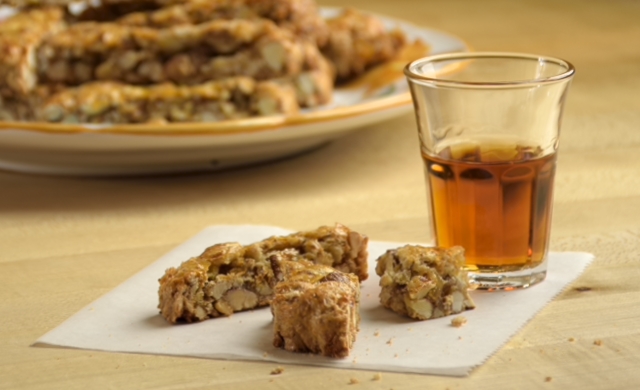
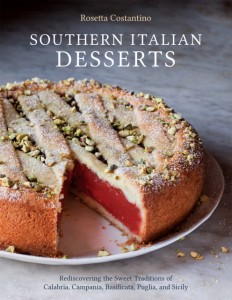
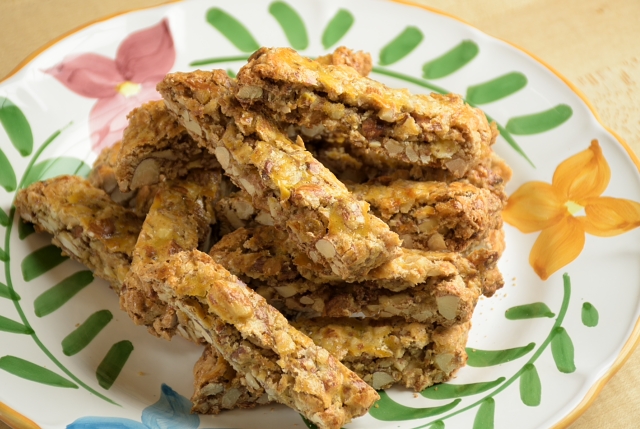

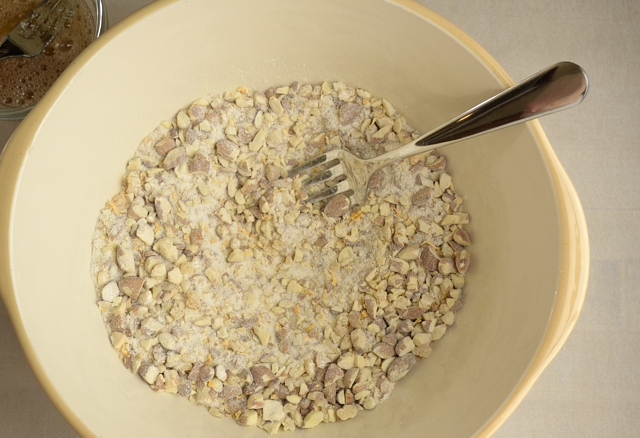
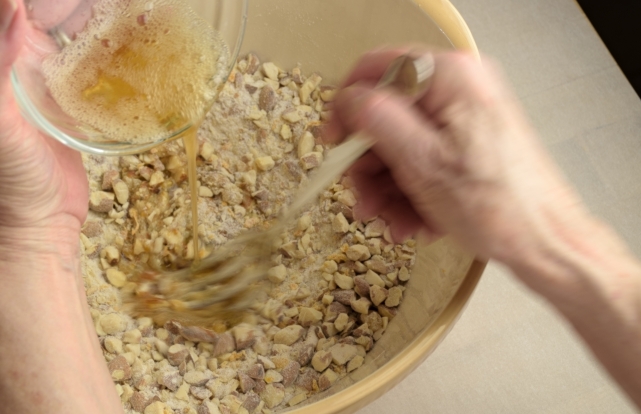
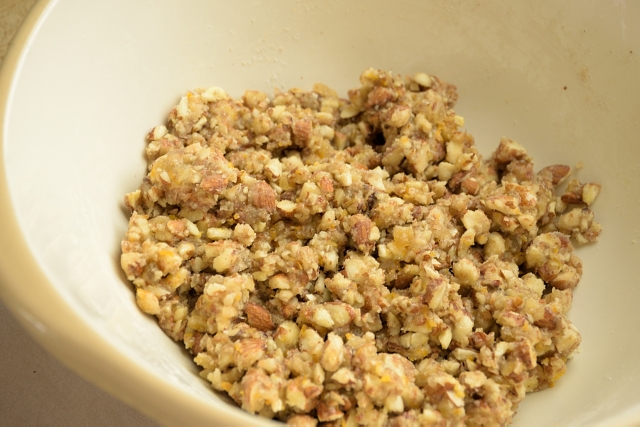


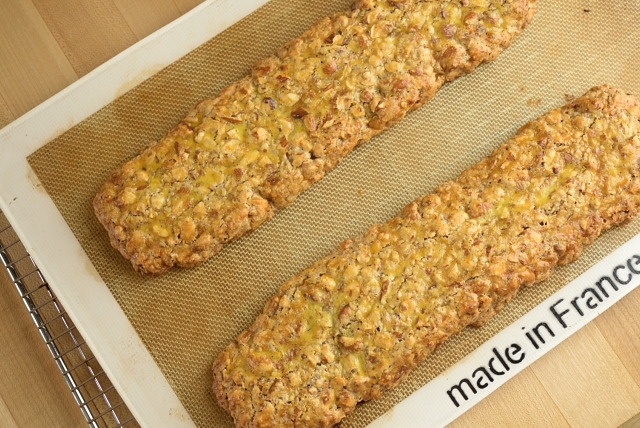
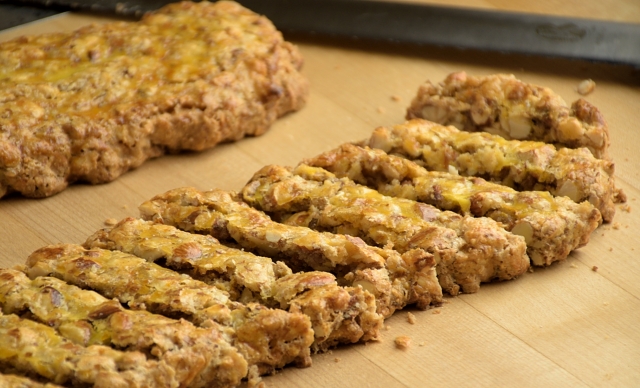

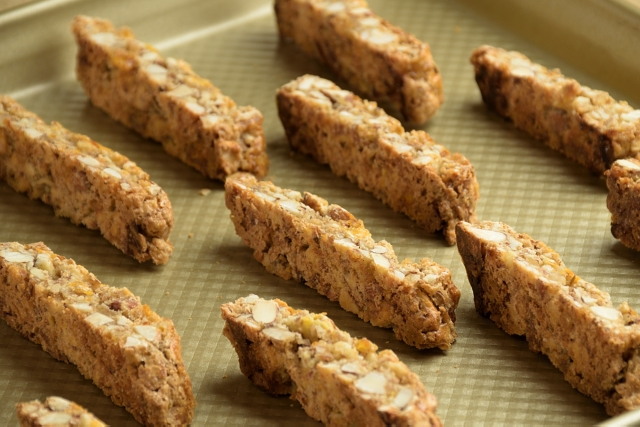


Friday, April 18th 2014 at 12:43 am |
That looks beautiful! One year I’d love to do Easter the Italian or Greek way. They do it so well!
Friday, April 18th 2014 at 6:42 am |
Hi Lorraine,
Thank you! Greek and Italian Easter are wonderful holidays – so many wonderful foods. There are delightful sweets, wonderful breads and celebration dishes. Maybe next year! Happy Easter to you and yours!
Saturday, April 19th 2014 at 10:49 am |
Hi Adri, Boy you know how to make something Super Tempting! terrific tutorial, and I have all the ingredients (including a jar of my candied citrus peel, leftover from another project!) Buona Pasqua!
Saturday, April 19th 2014 at 7:01 pm |
Hi Nancy,
Thanks for the kind words. These are super! I hope you enjoy them. Buona Pasqua a te!
Tuesday, April 22nd 2014 at 1:25 pm |
Adri, I agree with you…the Italians really know how to do Easter! (Can’t wait to read your next post on Easter Monday.) I adore biscott (as we call it for short at our house) and I cannot wait to try your recipe. A sad household is a house with an empty biscotti jar. Love this! And, thank you for the cookbook rec!
Tuesday, April 22nd 2014 at 7:21 pm |
Hi Stacy,
Yes, indeed. Lots of goodies at Easter! Thees biscotti are great. I hope you give them a try, and you will love Rosetta’s book! Thanks for stopping by.
Tuesday, April 29th 2014 at 6:16 pm |
What a treat! These look more like trail mix clusters than cookies, which sounds like the perfect ratio to me. Love all those crunchy nuts, so these beauties definitely cut straight to the good stuff and don’t mess around.
Tuesday, April 29th 2014 at 7:17 pm |
Hi Hannah,
I have to tell you that these cookies really were a revelation. I hope you try them. Rosetta did a spectacular job with this recipe, and it was an absolute pleasure to feature them.
Saturday, September 27th 2014 at 2:47 am |
Woe! Your biscotti looks so good! I love it!
Saturday, September 27th 2014 at 7:08 am |
Ciao Marcela,
Grazie! Adoro questi biscotti.